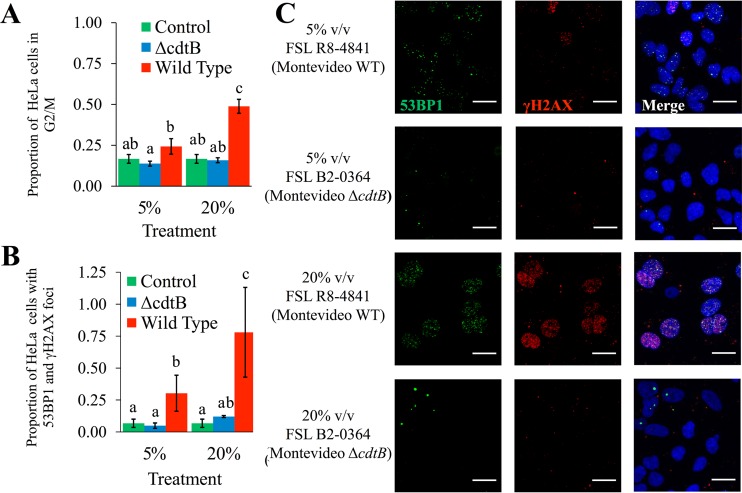FIG 5 .
S-CDT-mediated activation of the DNA damage response and G2/M cell cycle arrest can occur via paracrine pathways. HeLa cells were coincubated with cell-free supernatants from previous infections with S-CDT-positive wild-type strains FSL S5-0395 (serotype Javiana) and FSL R8-4841 (serotype Montevideo) and their respective isogenic ΔcdtB mutants; supernatants were added at final concentrations of 5% and 20%, vol/vol (v/v). (A) At 24 h post-intoxication, cells were stained with PI to determine DNA content and to quantify the proportion of cells in the G2/M phase. Results represent data from 2 independent experiments for each of the 4 strains. Bars that do not have identical letters represent statistically different values (P < 0.05). (B) HeLa cells grown on coverslips were coincubated with cell-free supernatants from previous infections. Immunofluorescence staining was performed to detect cells with 53BP1 and γH2AX foci at 24 h post-intoxication. Bar charts represent data from 2 independent experiments. Bars that do not have identical letters represent statistically different values (P < 0.05). (C) Representative images are shown for supernatants from infections with FSL R8-4841 (WT strain of serotype Montevideo) and FSL B2-0364 (ΔcdtB mutant of serotype Montevideo). Data for FSL S5-0395 (Javiana WT) and FSL B2-0360 (ΔcdtB mutant of serotype Javiana) are shown in Fig. S1. Scale bars, 25 μm.

